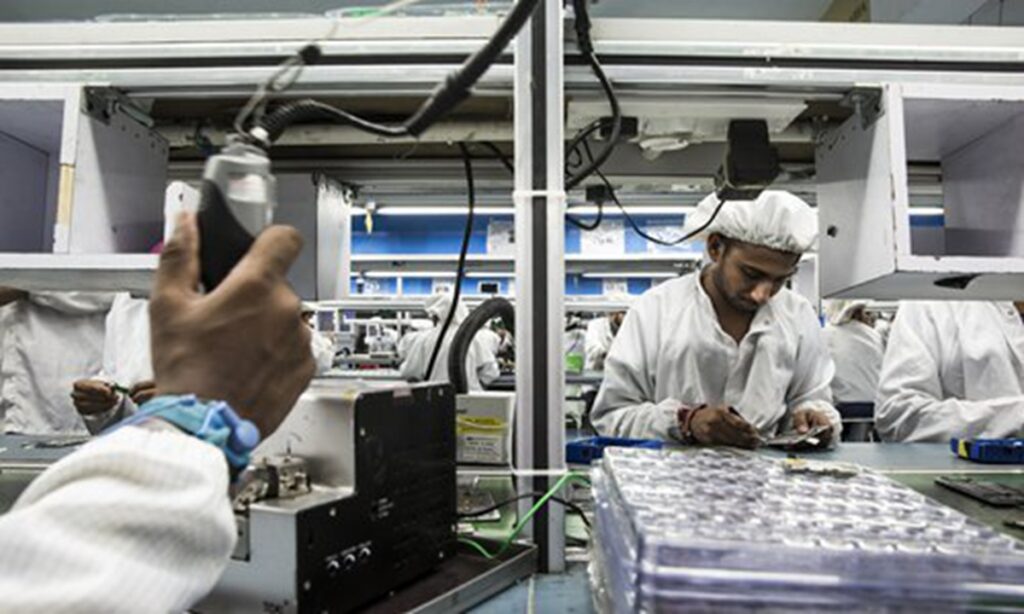In recent years, some American and European companies, such as Apple, have invested in factories in India. This has provided the Western media with an opportunity to celebrate the shift away from Chinese manufacturing. However, how long will this celebration last?
Read this story reported by Reuters on August 10: Over 3,000 poor Muslims have fled a business hub outside New Delhi this month, fearing for their lives after Hindu-Muslim clashes and sporadic attacks targeting them, residents, police, and a community group said.
Such minor attacks may seem comparatively insignificant when considering recent clashes against minorities in the Northeast and other places in the country. However, these incidents took place in the new urban center of Gurugram – where 250 Fortune 500 companies have offices. It is yet another wake-up call to companies trying to invest in India about the clash of religious beliefs.
In choosing India as a “spare wheel” for manufacturing in China, Western companies are not oblivious to the issue of religious conflict in India, which is the most critical issue affecting the future of manufacturing in India. They chose India because they had no other choice, and they had to prepare for the strategy of decoupling from China pursued by Washington and some of its Western allies. This is a compulsion.
Another kind of compulsion has just begun. These investors have been forced to engage in a far-flung game with Indian tradition, culture, and religion. Foreign investment in India, including Chinese capital, is confronted with a “cultural body” that has remained unchanged for millennia.
Indian scholar Deepak Lal summarizes this millennia-old unchanged social tradition as “The Hindu Equilibrium” and argues that this super-stable social system has been accepted by most Indians. He asserts that no one is willing, and no force can break this historical norm.
The fact that the globalization wave, which has been so violent so far, has not been effective in weakening ethnic conflicts in India, has as much to do with India’s political system and governance as it does with its Hindu “historical normality.”
There is little reason to believe that India will undergo major secularization. The trouble with Indian politics is that Modi relies on the supremacy of Hinduism to boost his prestige, garner votes and rally popularity. The resurgence of Hinduism is thus accelerating, leading to ever-increasing religious conflict. According to the Pew Foundation’s 2021 Religious Attitudes Study, nearly two-thirds of Hindus say being a Hindu is essential to being a “real” Indian.
While this will favor the government’s push for its ambitious plans to upgrade the manufacturing sector and accelerate infrastructure development. But this is only a short-term effect.
In the long term, the return of Hinduism is increasing antagonism with other religions and will keep expanding the potential for conflict.
India’s strengths are thus two-fold, and its weaknesses will become more pronounced, not simply in rejecting other religions but in the constraints that a closed religion places on the country’s development.
For example, India is the world’s most populous country, with considerable demographic advantages. However, it also has a caste system associated with Hinduism, which divides people into different castes and creates a split in the population, especially regarding educational levels.
Another example is the treatment of women. In Hinduism, a concept known as “Pativrata” emphasizes that women should faithfully serve their husbands and families. This philosophy holds that the highest goal of a woman is to serve her family, rather than pursuing her own career or social advancement. The experience of all industrialized countries has proven that industrialization can only be achieved with the broad participation of women.
Industrialization leads to secularization, and this process also drives industrialization. However, India wants religious extremism to drive industrialization and a retreat from secularization in favor of modernization.
Whether the manufacturing industry can develop in a country or not, the human factor remains the most fundamental. People are cultural, and not all cultures will be conducive to developing the manufacturing industry. People growing up in different cultural environments are the decisive factor in determining whether they can be the driving force behind industrialization.
India has a future, but it will depend on the success of a slow and tortuous cultural change. We assert that India’s industrialization is bound to be a long and chaotic process.
(Global Times)




